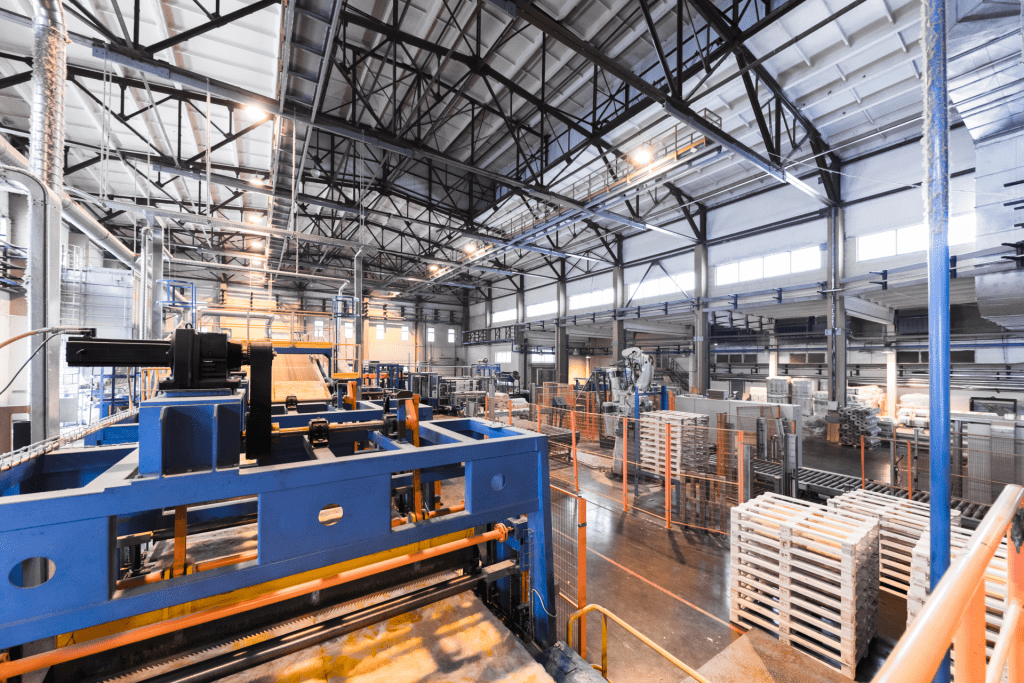- +91 8123115793
- info@kankengineers.com
- Banashankari 6th Stage, Bangalore 560062
Equipment Assembly and Installation
Equipment Assembly & Installation
Assembly represents the completion of the equipment manufacturing process that results in the piece of equipment being ready for installation. Installation involves the placement and/or setup of a fully assembled piece of equipment for use or service.



The Installation of Industrial Machinery & Equipment industry includes specialized installation of plant and equipment that do not form an integral part of buildings. Industry-related activities include the installation of production equipment, mainframe computers, communications equipment, and radiation and electromedical equipment. The industry does not include, for example, the installation of escalators or elevators.
Industry Products and Services
Industry Activities
- Installation of electrical equipment
- Steam generator installation
- Installation of special machines for the production process
- Installation of other machinery, equipment and installations
- Industrial equipment installation
- Assembly of process control equipment
- Assembly of mainframes and similar computers
- Disassembly of machines and equipment
Installing new equipment, whether in a brand-new production line or an existing line, can be challenging. To make the process as easy as possible and to save yourself time and money by decreasing the potential for downtime, ask the following questions before any new equipment installation.
1. First, be sure to talk to your supplier’s project manager before starting preparation for the installation. He may have information that will affect your preparation. He also will be your main contact for questions regarding delivery of the project, and will give you an idea of what you need to have on hand and what you need to accomplish before equipment is delivered.
2. Ask your supplier about electrical requirements and other necessities that need to be on-site for proper installation. By asking this beforehand, you’ll know exactly what you need to accomplish before the new equipment arrives. Here are some of the items you need to ask about:
a. Power (460V/3Ph/60hz, 120V, 24V or other)
b. Pneumatic (compressed air); 90 psi, 60 SCFM …
c. Dedusting (port diameter, multi points, pressure, flow rate …)
d. Communication cables (Ethernet or other)
3. Where are drop sites for these items located? Knowing this can help you save time and will help the supplier position the new equipment. Ask the project manager for the final layout and add drop sites if needed.
4. Are there out-of-the-ordinary environmental conditions at the plant? Installation can be difficult for service technicians when they have to work in such settings.
5. If installation involves a high-pressure wash down with chemicals or other cleaners, make sure to share details with the supplier.
6. What is the floor thickness required for your new equipment? Make sure you ask your supplier for the exact weight of your new equipment, robots will transmit extra forces to the floor while moving. Robotic equipment, for example, typically requires a minimum of 8 inches of additional floor reinforcement.
7. Stability is another factor to keep in mind for equipment that includes a robot, so be sure to think about anchorages. Robots can move very fast and equipment that incorporates them needs to stay steady. Are anchors included with the new equipment? If not, do you have all the anchors required for the new equipment?
8. Do you need to relocate piping or other items? Installing new equipment may force you to relocate existing components depending on the size and layout of the new equipment. Make sure that all relocating is done before installation begins, to avoid installation delay and production downtime.
9. Is lighting adequate for the new equipment? Consider alternative ways to provide light to the installation technician so he can do his job properly. You’ll also need to think about the positioning of your current light fixtures. For example, if a new bagger is bigger or smaller than the existing one, the location of the light source that currently attaches to the bag magazine may not be optimally positioned once the new bagger is in place.
10. Do you have everything needed for equipment commissioning? Make a list of everything you need to do tests and to run your equipment. This may include empty bags, rolls of bag film, pallets, wrapping film, labels, labeller, printer and ink, glue, bagger, slip sheet, etc.
11. In case pre-installation preparation doesn’t go as planned and you’re not ready to install by the planned date, can equipment be stored for an extended period of time in a dry room without deteriorating? Find out if you have a dry place to store equipment, to prevent its deterioration.
